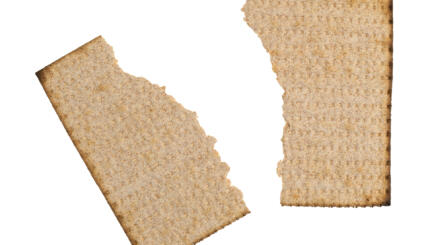The shankbone, or the zeroa (pronounced zih-ROW-ahh), is one of the six principal components of a standard seder plate. It is a roasted animal bone, typically lamb, though some use the bone of a different animal. Vegetarians often substitute a roasted beet.
The zeroa symbolizes the lamb that Jews sacrificed as the special Passover offering when the Temple stood in Jerusalem. That lamb in turn was sacrificed in memory of the lamb whose blood was used to mark the doorposts of the homes of the Israelites in ancient Egypt. For this reason, many choose to use a lamb bone for this purpose. However, since it’s forbidden to eat that sacrifice outside of the Temple, some Jews have the opposite custom, of using the limb of another animal so as not to make it appear that we are imitating the sacrifice. For the same reason, those who use an actual lamb bone are enjoined not to eat it at the seder.
The practice of having a zeroa on the seder plate derives from the Talmud, which states that two cooked items should be present at the seder. According to the Talmud, other possibilities for the two cooked foods included rice, beets and fish. However, by medieval times, the custom had apparently settled on an egg and a roasted shankbone.
Alone among the seder plate items, the zeroa does not play an active role in the seder, serving only as a visual reminder of the sacrifice. There is a moment in the seder where the leader is instructed to point to the shankbone while recounting the practice of offering the Passover sacrifice. However, notably the leader does not touch the zeroa during the seder as is done with the matzah and the bitter herbs.
With your help, My Jewish Learning can provide endless opportunities for learning, connection and discovery.
seder
Pronounced: SAY-der, Origin: Hebrew, literally "order"; usually used to describe the ceremonial meal and telling of the Passover story on the first two nights of Passover. (In Israel, Jews have a seder only on the first night of Passover.)


